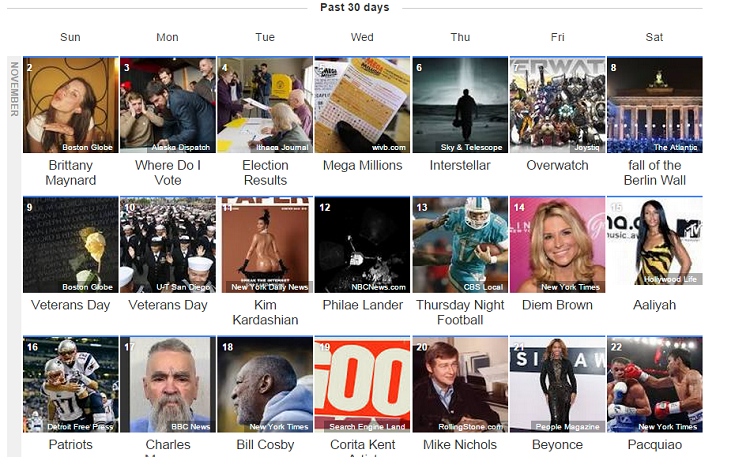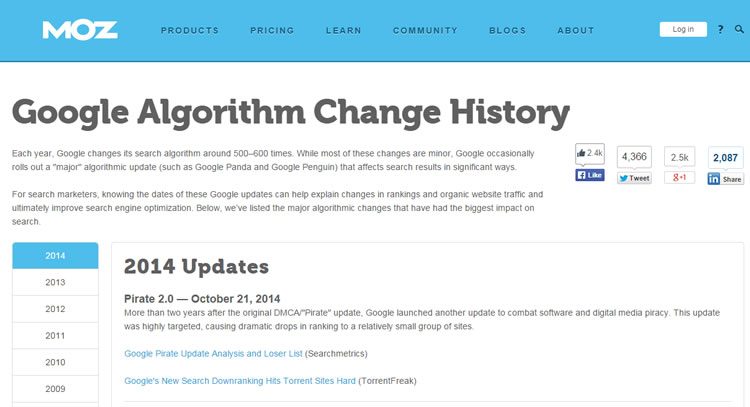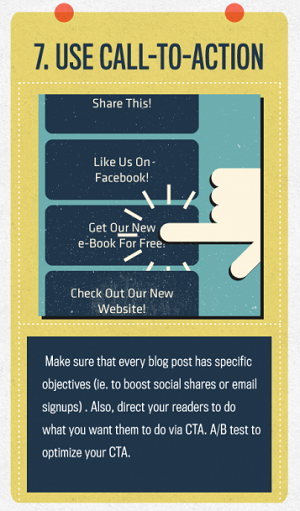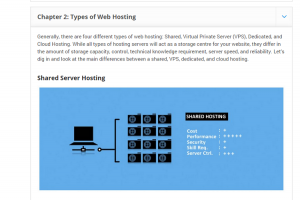
Blogger and SEO expert Jeff Bullas has written about the importance of evergreen content in the wake of Google’s Panda and Penguin algorithm updates.
He states,
“Although keeping a news site or a blog up to date with fresh daily content is important and an effective way to generate traffic, your website must also have a solid backbone of ‘evergreen’ content-or stuff that wll not go out of date so easily-to stay relevant.”
Bullas makes an excellent point about an important reason to write at least some content that is relevant today, tomorrow and the years to come. Another reason to write content that still seems fresh months and years after it’s been written is that your site won’t seem unkempt and out of date.
Examples of How Evergreen Content Can Work for You
Evergreen content is the backbone of your website. Most busy business owners have a hard time keeping up with regular blog posts and you may not yet be successful enough or bringing in enough income to hire writers to handle some of the work for you. Evergreen content stays fresh and adds value to your site when you can only post new articles occasionally.
If you’re site is already successful, then providing solid guides that users can refer to time and time again can keep them coming back to your site as one of their top resources.
One example is the Web Hosting Beginner Guide here on WHSR. This is a guide that website owner newbies can refer to and check back in and reread when they need additional information on what goes into setting up a new site and finding an excellent web hosting company.
It contains information that likely won’t change for many years, such as the types of hosting available, registering a domain and even an explanation of bandwidth.
Creating Content with Long-Term Relevancy
Creating content that readers will want to read down the road, but that is also relevant now can be a challenge. Good SEO advises that you’ll want to look at trending topics as a possible source of article ideas. However, what is important to note is that you also want to take that trend and turn it evergreen.
Let’s look at some trending topics from November, 2014, just to use as an example. Google’s trending searches for the 30 days of November included:

As you can see, many of the trending topics are tied into recent news events. Let’s use Charles Manson as one example. Instead of just writing a piece about the most recent Mason craziness, you might right an article about serial killers and how to spot one or what makes a man like Manson tick (not that anyone can really figure that out).
The key is to keep the subject narrow but at the same time to expand on it enough to cover all aspects of the topic and provide a guide for someone wanting to know about serial killers.
Types of Evergreen Content
Some popular types of evergreen content include:
- Infographics
- Guides
- How-to articles and videos (visuals are important if doing this in the form of an article)
- Product reviews (choose timeless products when possible)
- Recipes
- Advice
- Resource lists
- FAQs
- Definitions of key words for your industry
Content that is not as conducive to being evergreen include:
- Current news
- Reports and studies
- Recent trends in fashion, color, etc.
Let’s say you run a blog for beginning golfers. Your first posts might be evergreen topics such as:
- History of golf
- Equipment new golfers need
- How to hold a golf club
- How to tee off
- How to find a golf pro to teach you the game
These topics should not need updated. They are evergreen and will be current for many years into the future.
Samples of Evergreen Content

One of Moz’s evergreen content – Google Algo Change History – accumulated more than 10,000 social media shares over time.
One of the best ways to learn what constitutes an excellent evergreen article is to look at some samples from others. Below are some examples of strong evergreen content that will work for the long-term.
- Google Algorithm Change History – This page looks at the changes in Google’s algorithms over time. It is educational for the reader, because it shows some of the patterns Google has used and reading through it will help site owners understand why excellent content is so important. It is a good example of using history and reports and studies.
- Bitcoin FAQ – Bitcoin’s FAQ page is another good example of evergreen content. FAQs are a great way to get some evergreen content up on a topic that will answer the questions of newbies to the site. It will only need updated if you change processes or release new services and products.
- Alzheimer’s Association Resource List – Resource lists give your readers information on where else they can find extended information on a topic. The resource list on the Alzheimer’s Association website is a good example of this type of evergreen content because most of the resources are in the forms of PDFs already stored on this site. That means those links won’t disappear as ones to outside sources might.
- How to Motivate Employees in Less than 5 Minutes – Entrepreneur has an evergreen article up by Shari Alexander on motivating your employees that is an excellent example of an evergreen how to article. This article offers solid advice for business owners that is pertinent today but will also be effective in two years. Notice how she narrowed the topic down from just motivating employees to motivating them in less than 5 minutes.
- Making Leftover Turkey Yummy Again – This is a recipe posted on the blog of author Shirley Jump. Shirley’s book may go out of print at some point, but you can be sure that people will still be coming to her site to grab this recipe after they realize how many Thanksgiving leftovers they have. They will then find out what books she currently has available. This is a great way to make a timely topic (a book release) more evergreen.
- Digital Dictionary – All Things Photography offers this glossary of digital photography terms. Most of the time, terms will stay the same for an industry with an addition here or there. A glossary of basic terms makes for a strong evergreen article for your site and a great launching point for beginners just getting into your industry.
You’ll Still Need to Do Updates
Evergreen doesn’t mean you’ll never need to update your post again. As best SEO practices change and Google’s algorithms change, you’ll want to go in and refresh your content. You may also want to add to the content as new information comes to light.
Let’s look at the example above about equipment new golfers need. If a new item becomes available that helps new golfers learn the game better, you might want to go in and add this information to the article to update it.
Recently, I wrote an article titled Repurposing Old Blog Content and Giving it a New Purpose.
There is a lot to be said for going back through your site every so often and seeing what content might need a fresh coat of writing paint. It can help with your site’s search engine ranking, let your visitors know that you care about what they’re reading and enhance the overall quality of your site.

Image taken from the Infographic 7 Must Have Elements of a Great Blog Post
Write a Current Call to Action (CTA)
Once your evergreen content is in place, you want to be sure you have a current Call to Action on each of those pages. Since the evergreen content is the backbone of your site, you’ll want readers to read it and then take an action, such as signing up for your newsletter.
You’ll also want to make sure your CTA is evergreen. Some examples of evergreen CTAs:
- Newsletter sign up links
- A call to buy a product that you offer year after year
- A link to a free book offered on your site (also evergreen content)
Get the Word Out About Your Evergreen Content
Since this is your brand and content that you want to use again and again, you’ll want to create some buzz about it.
- Link to it from other posts on your blog. For example, if you write a new article about how to hold a golf club, refer back to the beginners guide on equipment that is needed for beginning golfers.
- Create a “Start Here” spot that directs the readers through your basic information articles.
- Share the link when you add to discussions around the Internet. Be careful not to spam, though.
- Promote those articles on social media on a regular basis to remind people it is available.
Is it Ever Okay to Write Trendy Topics?
Of course it is okay to write trendy topics, but you’ll want the majority of your content to at least be partially evergreen. For example, let’s say that the golf blog we’ve been using as an example wants to write about the 2015 PGA Tour. Within that article, the writer might also include info on the history of the PGA, best golf courses in America or how golf players turn professional.
By adding in some evergreen content, parts of the article might become outdated, but the overall article will still bring value to the reader.
Now that you understand why evergreen content is so important to the success of your blog, go back through past articles and see how you can make them more relevant for the long term.
Digital & Social Articles on Business 2 Community
(585)









